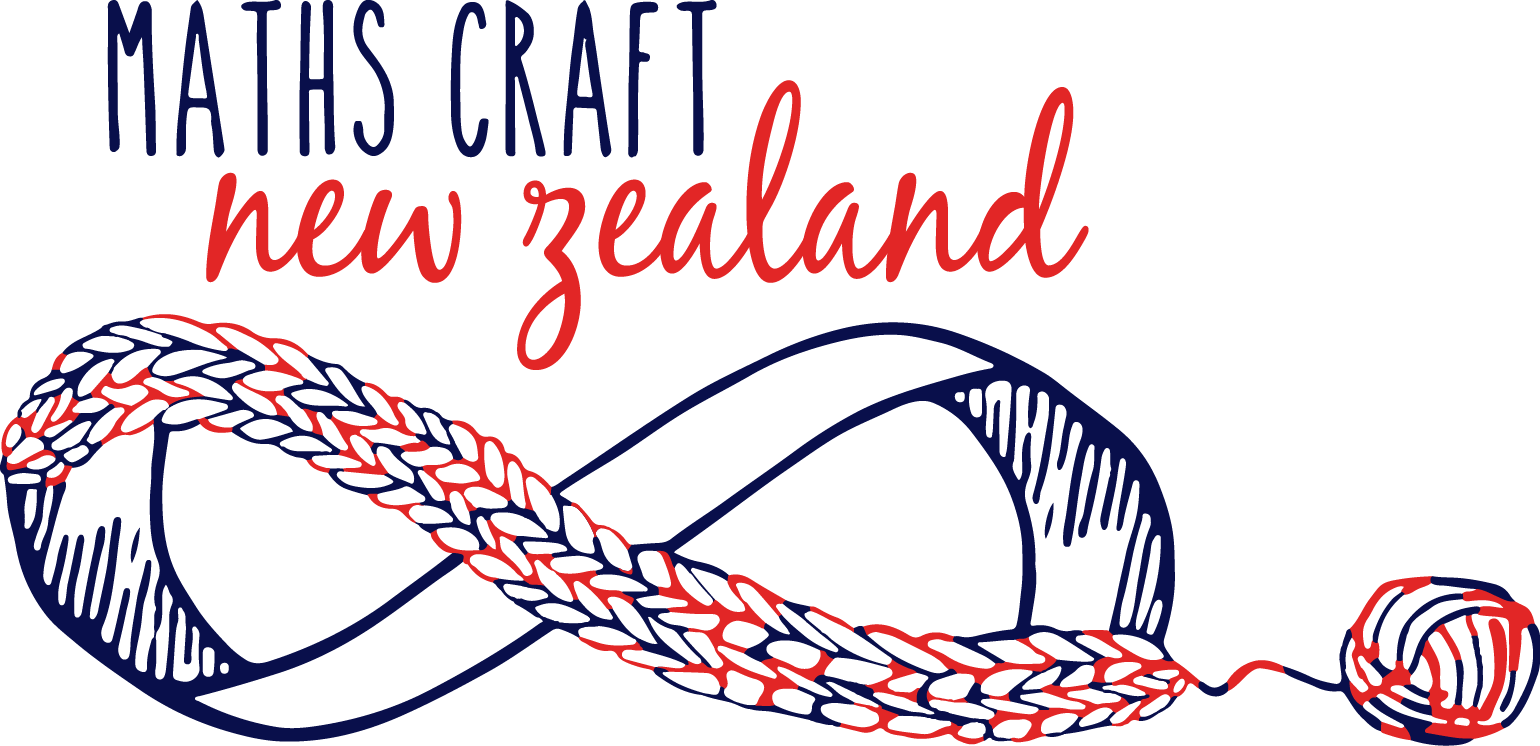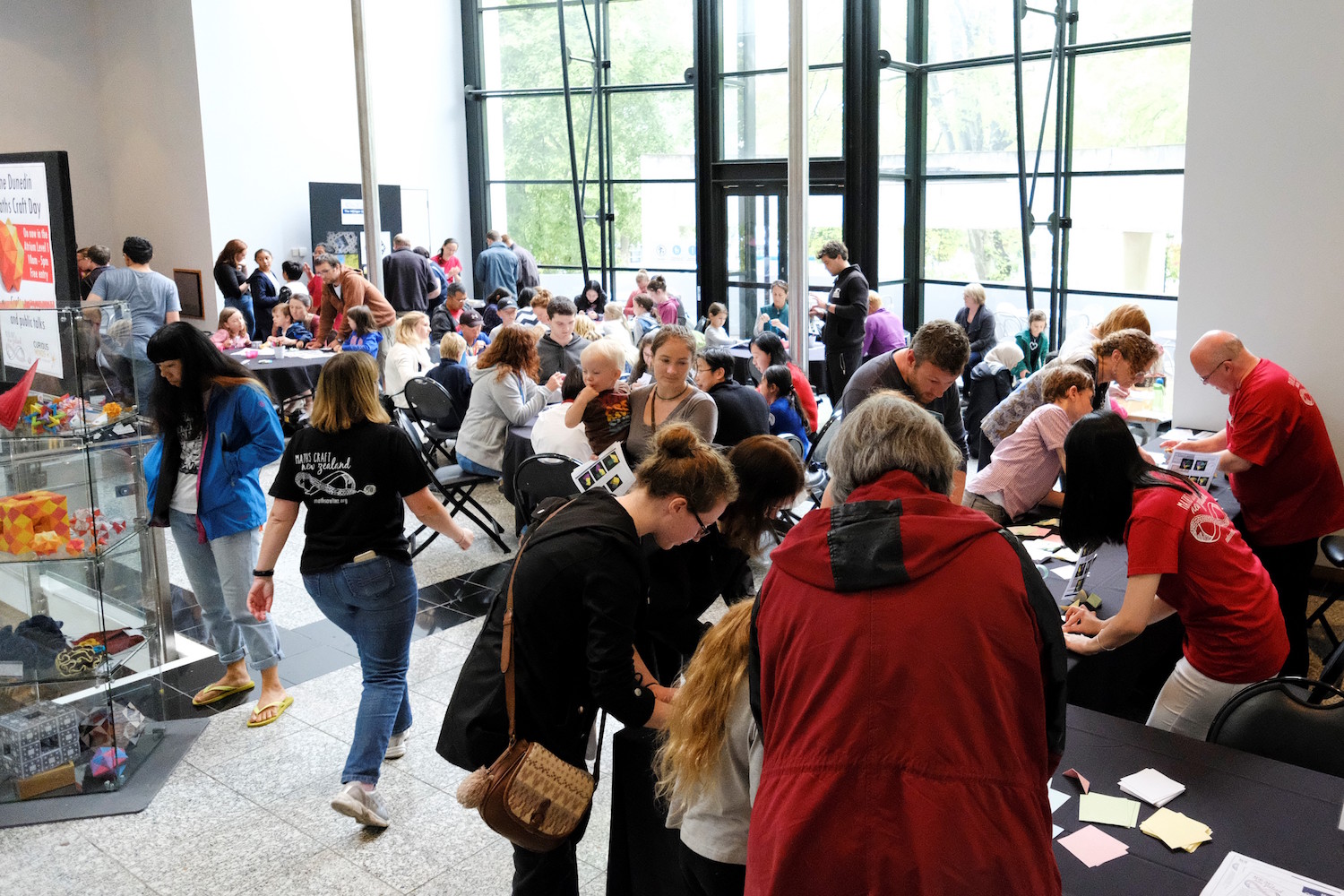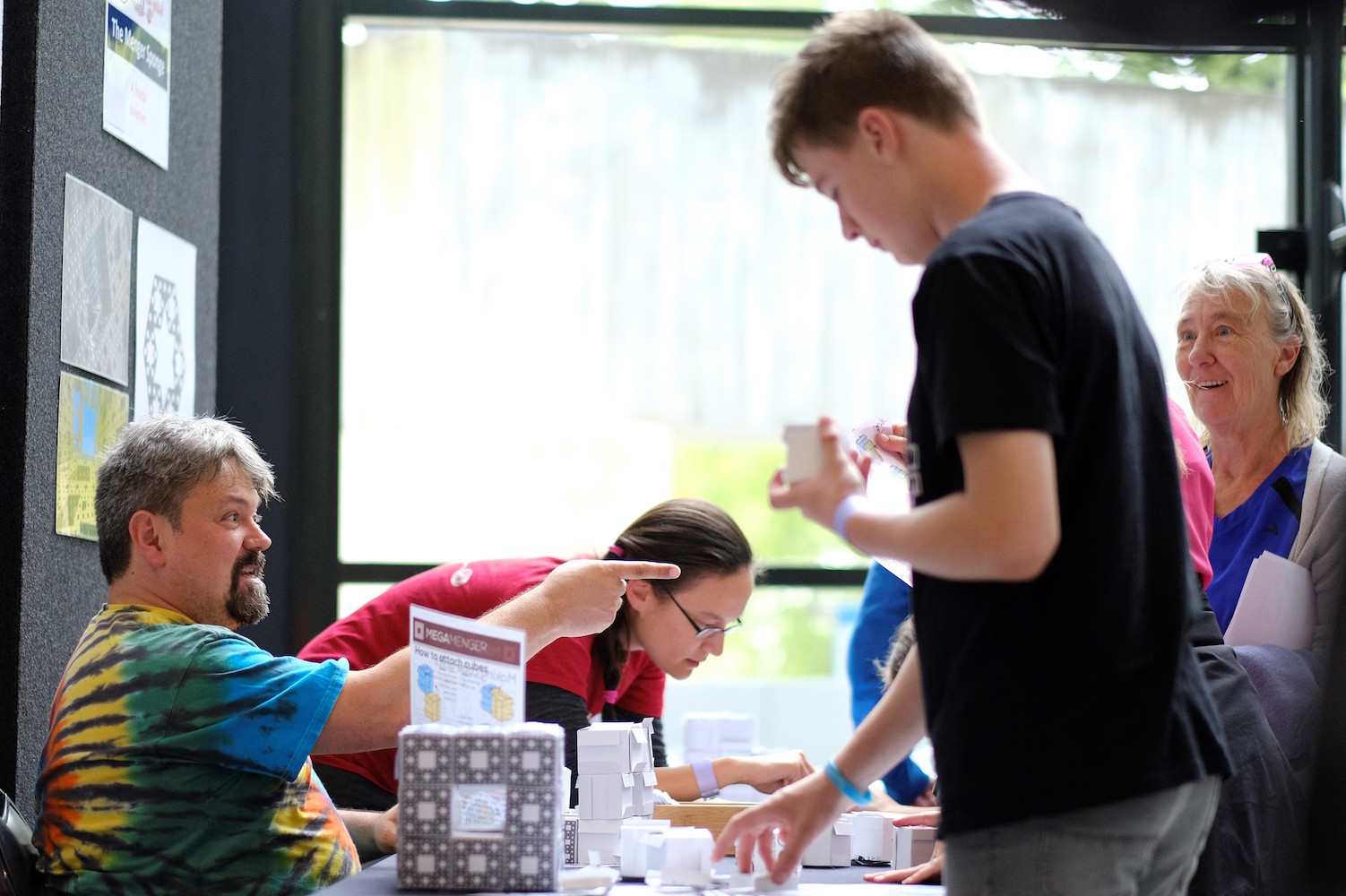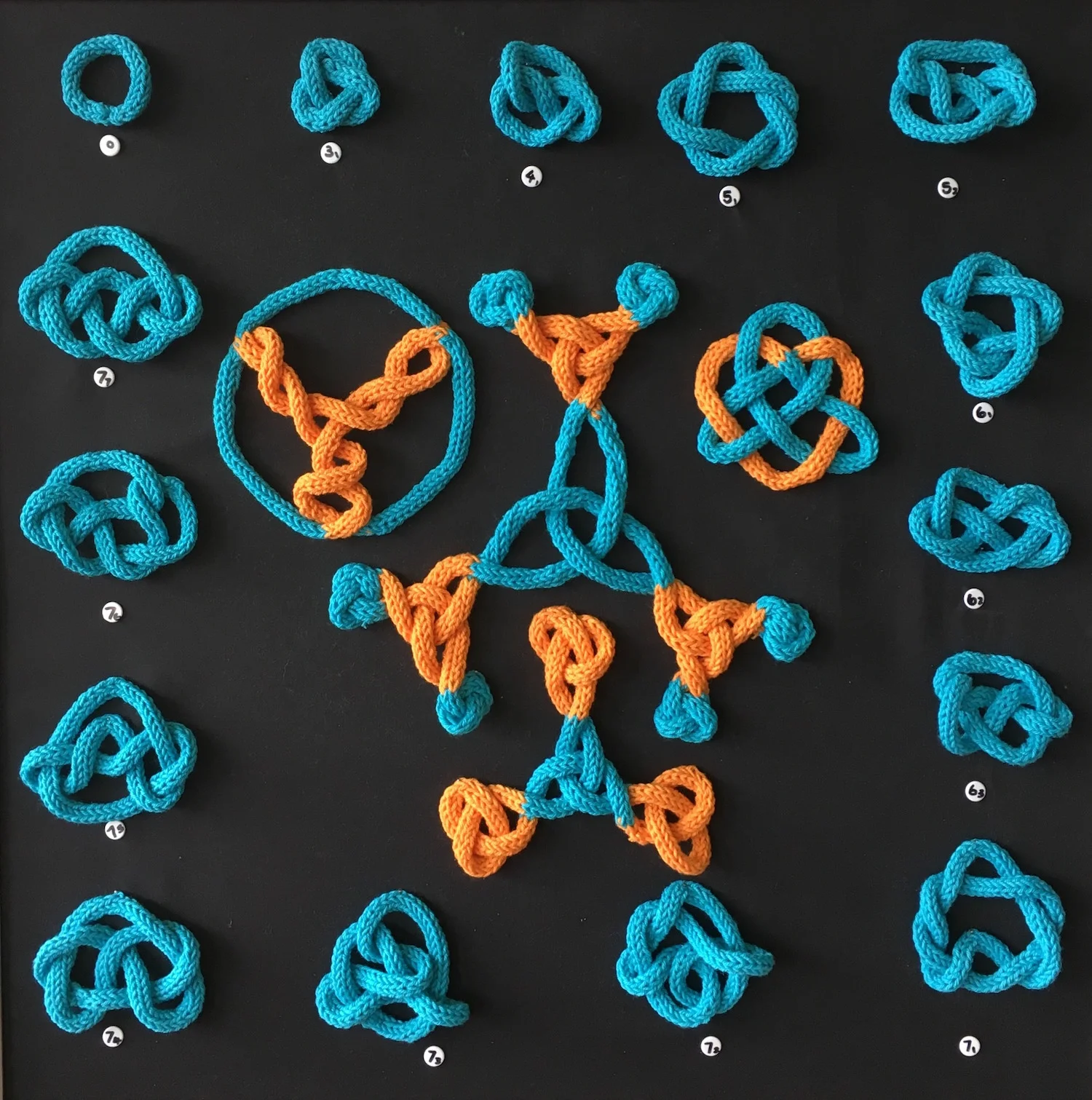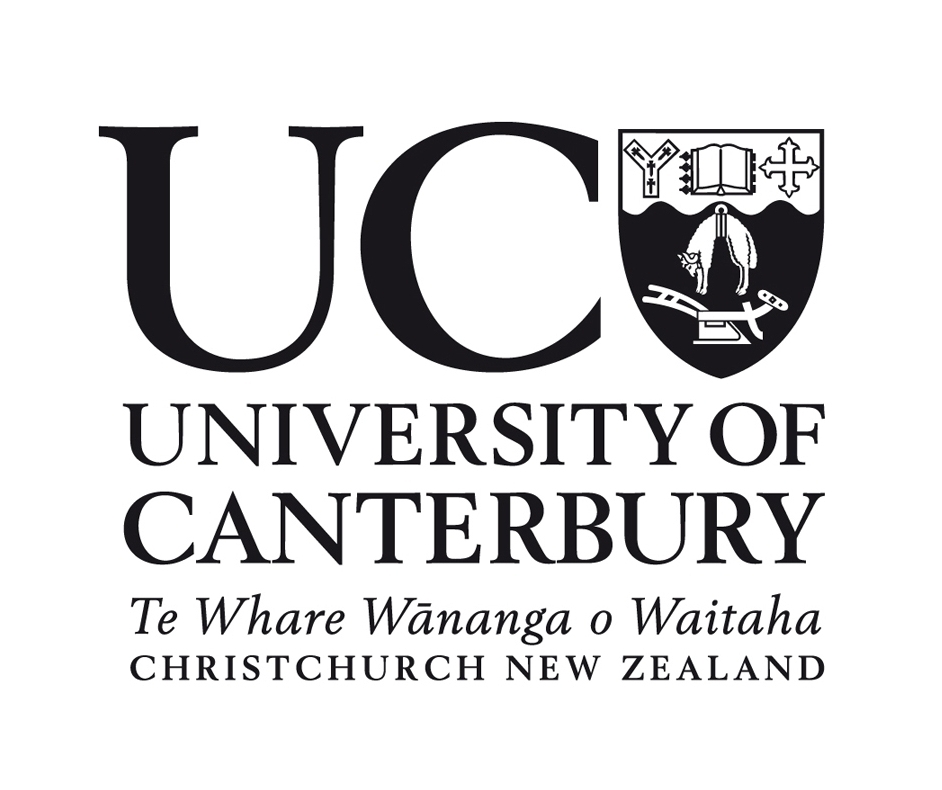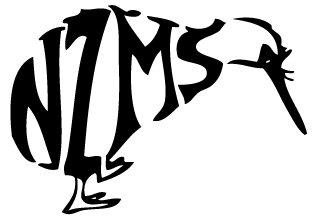Maths Craft New Zealand’s first ever event in Dunedin was held on Sunday 11th February in the Otago Museum, and was a big success. Approximately 1,000 visitors explored maths through craft at six craft stations, and by attending three free public lectures. The craft stations were staffed by our team of volunteers drawn from University of Otago students and staff, from local school teachers, and from a growing pool of experienced volunteers from previous Maths Craft New Zealand events. These volunteers guided our visitors through the maths and the craft at the stations, which were on Möbius strips, mathematical colouring and drawing, knitted knots, Menger cubes, origami, and string art. The day-long event was open from 10am to 5pm on Sunday, and combined hands-on craft with public lectures given by New Zealand mathematicians. The event was busy as soon as the museum opened its doors, with families arriving at 10am and making a beeline for our event. At its peak, the space was thronging with people, learning at the craft stations, working at the packed craft tables, discussing our display objects, and being busy crafting and talking about mathematics.
Since Dunedin was a new event location for us, we did not know what to expect, and so were thrilled with the almost 1,000 visitors we recorded. This was especially in light of the fact that the Otago Museum reckon 350 visitors to a day-long event counts as a success. Our stations and volunteers were busy all day long, as were the other areas of the Museum, including the café, shop, and galleries. The space we used at the Museum was the perimeter of the Atrium on Level 1, with an open central section with views down to the ground floor of the Atrium and up to Level 2. The two-storey windows at one end meant that the area was flooded with the natural light which is so good for crafting. We worked closely with the Museum staff before the event to ensure that we made the best use of a space which came with its challenges. Because the space formed a ring around the atrium, we had to ensure that people would move around the entire area and see all that was on offer. But we also had to keep clear the entrances to two Museum galleries which adjoined our space. The advice of the excellent Museum staff as well as our own experience with Maths Craft events ensured that we achieved both of these objectives. In particular, care was given both to the choice of the six stations from the 10 we have developed, and to their position in the space. It is worth noting that we were careful only to count visitors to the Maths Craft event and not those people who walked through it to get to the galleries on either side. However, since we know that some of these people did come and spend time at the craft stations after they had visited the galleries, our record of almost 1,000 people is certainly an underestimate.
Visitors entered the space via stairs or a lift, and were greeted by volunteers who gave them information about the craft stations and the schedule of public talks. The six craft stations were arranged around the space described, along with displays of mathematical craft on tables and in display cabinets. At the window end of the space, bathed in natural light, were numerous tables at which people could sit and try the crafts they learned at the stations. We were delighted to once again see a common feature at our events: young and old working together and talking through the maths they were doing with their hands. Our friendly and keen volunteers were always on hand to help, both at the stations and at the craft tables, where they circulated with advice, encouragement, and materials. Periodically during the day, the Museum demonstrated their superconducting Mobius strip, with a block of dry ice levitating above – and then below! – a large Möbius strip track it raced around.
Three free public lectures were held in the Barclay lecture theatre adjacent to the Maths Craft space. The talks were given by New Zealand mathematicians, and were attended by dozens of people of all ages. Associate Professor Clemency Montelle of the University of Canterbury gave an exciting talk on the topology of clothing which included cutting up clothes in the name of mathematics, and turning a rectangle of cloth into a versatile garment – the sari. Ms Elizabeth Chesney, a university student and retired schoolteacher from Christchurch, talked about knitting mathematical knots, which are beautiful objects with beautiful theory behind them. Finally, the University of Auckland’s Professors Hinke Osinga and Bernd Krauskopf gave a wonderfully entertaining and insightful talk about chaos, crochet, and mathematical sculpture.
This was the first Maths Craft New Zealand event in Dunedin, and at the end of a successful series of events it was energising to see so many people engaged and excited about mathematics. We received a lot of positive feedback at the event, which was repeated in the responses in our surveys, with 92% of respondents saying they “loved it”, 92% saying that they learned something, and over 97% saying they would “definitely” do something like it again. We were pleased to read comments like “[I learned] that maths can be fun” and “maths without numbers!”. The survey responses show that we appeal to maths fans and maths phobes alike, with only 54% arriving at the event saying that they “like maths”. The best news is that by the end of the event 80% of respondents say that they like maths, with no-one saying that they dislike it. Other responses include “really well thought-through”, “kids and I loved it we ended up staying for hours”, “great engagement”, “lovely helpers”, and lots of variations on the theme of “we loved it, please do it again!”. The Museum were also very happy with the event, and we look forward to developing this relationship still further in the future.
The Otago Museum. Image courtesy of http://otagomuseum.nz
